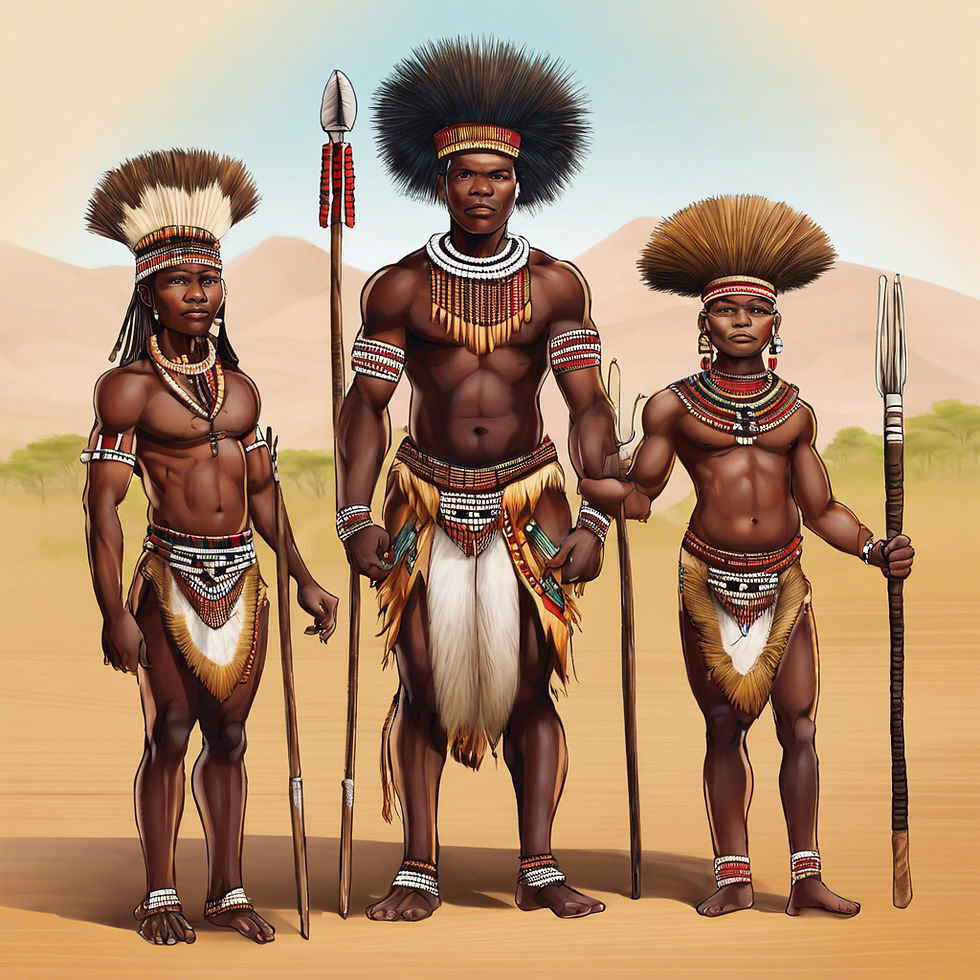ZULU MYSTICISM of SOUTH AFRICA
- Ms.WitchCraftz
- Oct 8, 2024
- 2 min read
There are multiple versions of the ZULU Creation Story, and this is one of them.
The ZULU Kingdom's Tribal Community in South Africa has thrived for over a millennium, preserving its rich heritage and traditions despite historical challenges. This proud culture, steeped in Occultic Mysticism, vibrant art, pottery, storytelling, proverbs, ceremonial dance, and a colorful creation narrative...
According to Zulu mythology, humanity's origins are rooted in the wrath of the powerful deity known as The God UNkulunkula, the primordial ancestor of mankind. This divine being, also known as the old-old one, is believed to be the creator of all things in Zulu culture. The story begins with UNkulunkula's intense anger, which manifests as a powerful vibration reverberating across the cosmos. Within this cosmic disturbance, the deity nurtured a tiny seed amidst the elements he scattered - landscapes, soil, bushes, and aquatic life - creating a fertile environment for the seed to grow.
From this seed emerged a humble reed, symbolizing the genesis of life itself. As the reed flourished, it eventually gave rise to the first man and woman, embodying the essence of humanity. This creation myth not only highlights the divine origin of humankind but also emphasizes the interconnectedness of all living beings with the natural world. The narrative showcases the deep belief in the cyclical nature of life, where creation is intertwined with the elements and spiritual forces shaping the universe.
The story of UNkulunkula's anger and the subsequent birth of the first man and woman is a fundamental tale in Zulu folklore, emphasizing the sacred connection between the divine, nature, and humanity. It reflects the cultural reverence for the elements of the earth and the belief in the divine order governing the cosmos. Through this myth, the Zulu people find purpose in their existence, seeing themselves as descendants of a primordial deity whose creative energy resonates in their lives.
An Isangoma or Healer plays a vital role in ZULU society, where Witchcraft is deeply ingrained.
Zulu culture is rooted in Mysticism and Witchcraft. According to this belief system, a newborn's name is bestowed by the Isangoma as either a blessing or a curse. Witchcraft is often attributed to various occurrences in Zulu culture.
In the practice of ZULU Witchcraft, common elements include the use of the intended victims' Blood, Nail clippings, Hair, Spit, Teeth, Urine, Feces, Semen, menstrual blood, placenta, mutilated body parts, Ancestral bones, and tried tissue, as Ancestors' remains are considered sacred, respected, and protected. These substances, when blended, are applied to items like coins, which are then buried, worn around the spell caster's neck, or hidden in the intended victim's bedding. Traditional Rituals are performed by Healers and Witch/sorcerers for various outcomes.
Aligned with the moon's phases, Traditional dance movements, drumming, attire, and specific intentions are part of the practice.
Witchcraft {Ritualistic actions intended to cause harm through psychological means}
Isangoma {Traditional Healer}
Witch {Female with malevolent intentions}
Sorcerer {Male with malevolent intentions}
Tokoloshe {Malevolent Spirit}
Ukudlisa {A Witch who administers poisons to others}



Comments